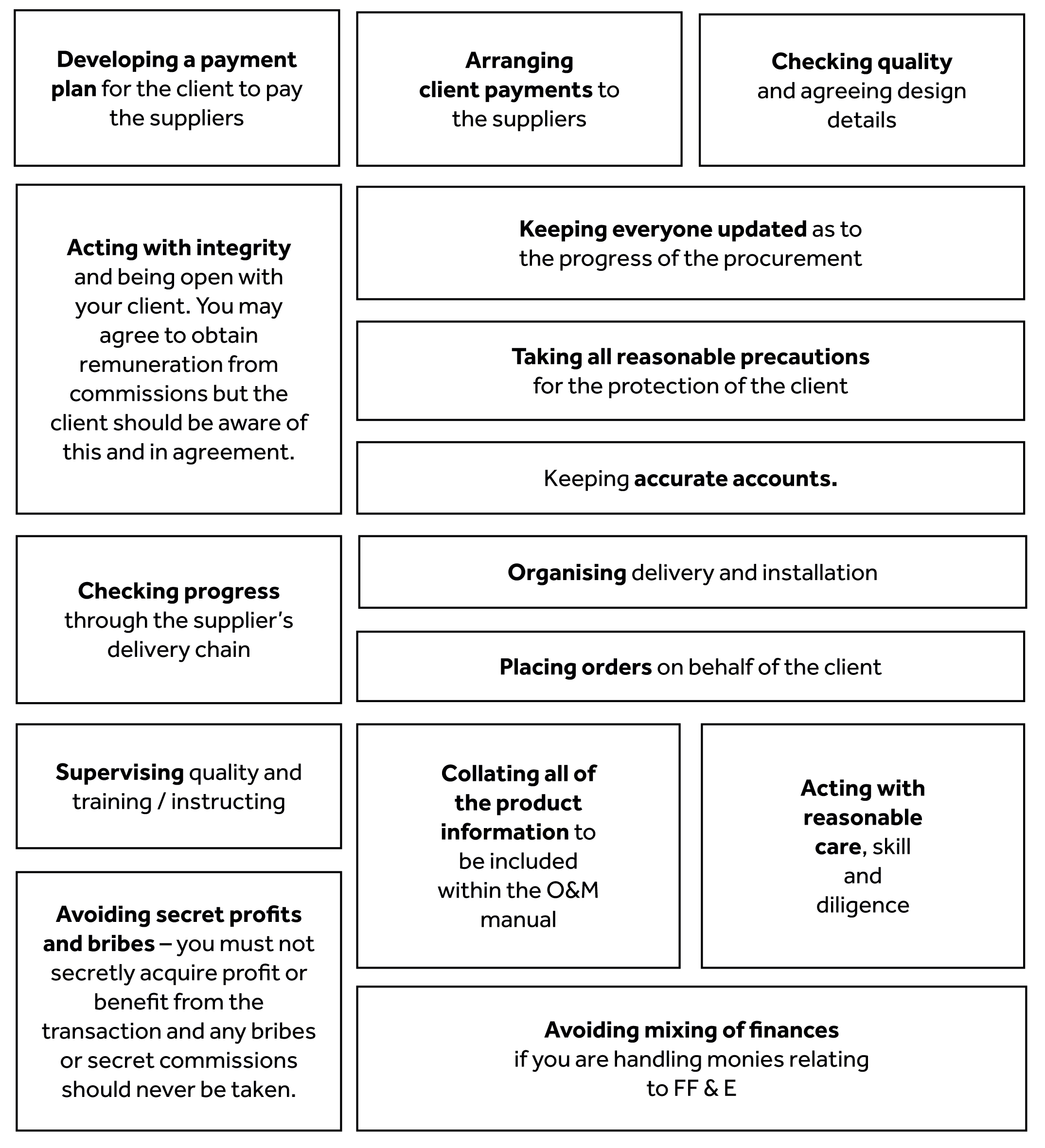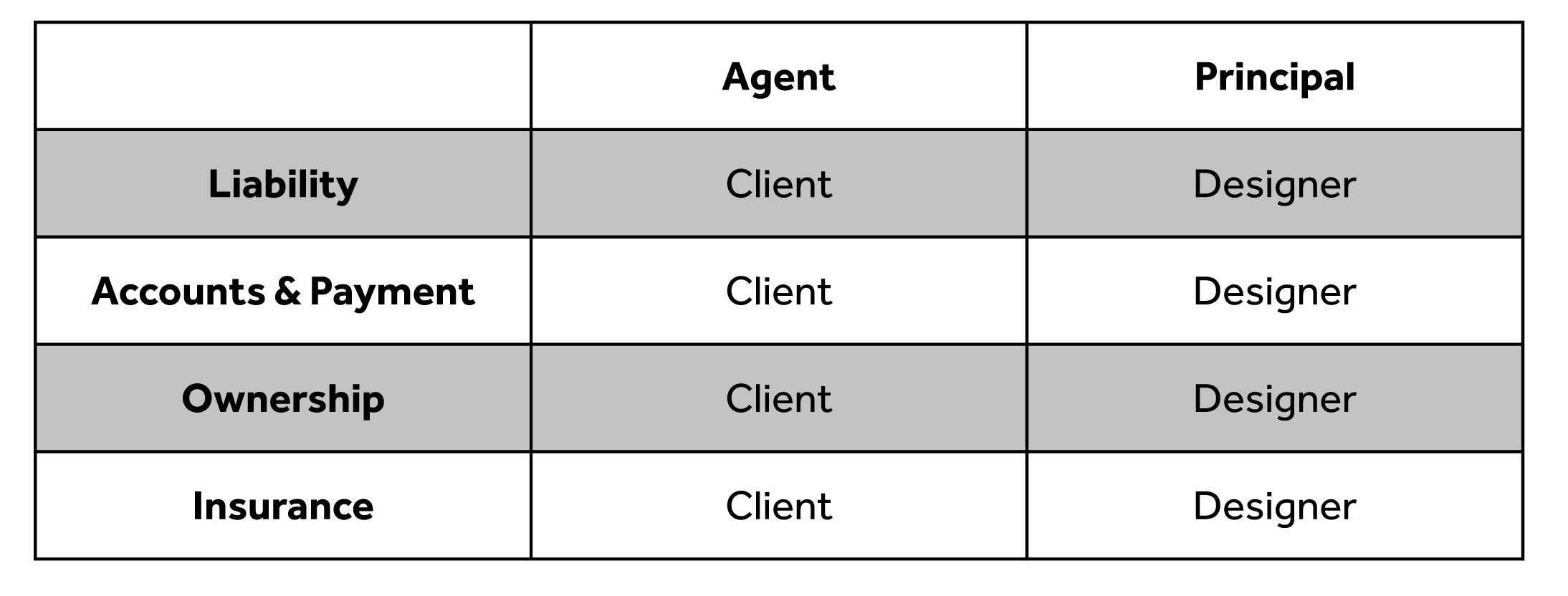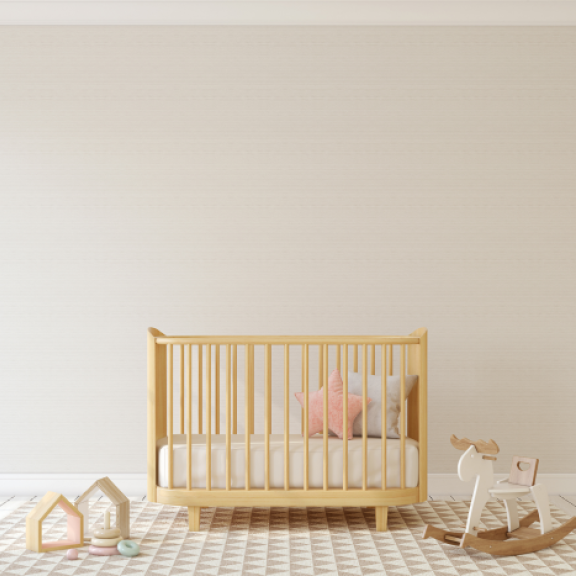Professional Practice Series: FF&E

Contents
- Aims
- Objectives
- What is FF&E
- The Designer's Role
- Researching
- Selecting FF&E
- Procurement of FF&E
- The Role of the Client’s FF&E Agent
- Running client accounts and payments as an Agent
- The Designer as the Agent
- The Designer as the Principal
- Selling FF&E Directly to a Client (Principal)
- The Legal Position
- Acting as a Principal
- Trade Discounts
- Liabilities, Warranties and Guarantees
- Contractual Issues
- Summary
Aims
You will be able to demonstrate your knowledge of the FF&E supply process
- Understand whether your role is acting as an agent, retailer or contractor and what this entails.
- Purchase, supply and install items including those for final dressing out.

Objectives
Explain what FF&E is
- Identify the designer’s role in relation to FF&E within a design project
- Describe the types of product research that could be undertaken for the supply of FF&E
- Identify procurement routes for the supply and installation of FF&E
- Clarify and describe the role of agent or principal (retailer) or contractor in the supply of FF&E
- Identify relevant legislation relating to the supply of FF&E

What is FF&E?
FF&E is an abbreviation of
Furniture, Fittings, and Equipment
It is a term used within an architect’s and designer’s contract of appointment and within building contracts, in order to address issues relating to the supply of a product. Within a building contract, it can also be extended to include finishes of products such as flooring, walls, ceilings, doors, and windows.
If you imagine the building is a box turned upside-down, furniture is everything that would fall out. Fittings are items fixed to the building so they would not fall out and equipment covers the mechanical and technical elements such as radiators, and media equipment, some of which may be fixed or unattached.
The Designer’s Role
It is important that you identify any conflicts of interest relating to the selection of products, e.g. if you have an interest in a furniture supplier or curtain maker.
- Most interior design commissions include specifying elements of FF&E.
- It will depend upon the project and the designer’s role within the project, as to what this entails. This should have been identified within your scope of work and your liabilities relating to the FF&E within your Terms and Conditions.
- Hotel, residential, retail, commercial, or an ocean liner project will involve different products. Consultants are often employed to specify specialist FF&E, and the designer’s role can be to work with the consultants and suppliers to specify the finishes, quantities, space planning, etc.
- The FF&E products should be identified at the earliest opportunity in order to define the scope of work that the designer is to undertake and, equally important, to identify the products that the designer is not responsible for.
- When the FF&E has been quantified, the design role is to research the best products to fulfil the design brief.
Researching
A client will often employ an interior designer or interior decorator for their product knowledge and ability to select suitable products in order to achieve a specific style. It is the designer’s responsibility to be aware of existing and new products so that they can fulfil client expectations.

Attending trade exhibitions

Reading design magazines

Subscribing to blogs

Newsletters

Attend seminars and talks

and Social media platforms
…can all keep you up-to-date with the latest products and design trends within your area of design expertise. This should include knowledge of sustainability and durability and awareness of new materials.
Designers need to constantly amend and adapt their knowledge of the wide range of materials available at any specific time, which can be challenging in a rapidly developing market.
Designers occupy an influential position in terms of considering the impact of climate and environmental changes on what they choose to specify or supply and such considerations are becoming essential, particularly in commercial design.
Selecting FF&E

The products can be bespoke or off the shelf, but should always be fit for purpose and relevant to the design brief, including budget and availability to suit the installation programme. Ideally, they should be ecological and humanitarian, and your job as a designer is to explain the pros and cons of the alternatives so that your client can make the right choices. Designers are well-placed to educate clients where appropriate.
Sourcing considerations should include:
- The manufacturing process of the FF&E. This could include the working conditions of employees, the company’s approach to sustainability, energy consumption in the manufacturing process, chemical usage, and possible toxic waste production and disposal.
- The carbon footprint of the goods involved in both manufacturing and delivery.
- The source of the raw materials – is it sustainable?
- The longevity of the materials and implications for recycling.
- Material wastage i.e. do designers understand the use of standard sizes and materials and how to minimize wastage in the specification.
Selecting the FF&E supplier
Selecting the supplier is as important as selecting the right product. A supplier will need to provide a good service to provide the designer and procurement administrator with accurate progress information and deliver a product on time, to the agreed specification, price, and quality. If the supplier is installing or delivering a product, they should also have skilled people with the correct indemnities and insurances, with clear instructions, and be quality controlled by a supervisor and signed off by the designer or client. When the product has been checked by the client or their representative, all guarantees and certificates should be issued.
The suppliers could be high street or trade retailers, artisans, bespoke manufacturers, artists, crafts or tradespeople, or materials suppliers from anywhere in the world. Consequently, if you are selecting a product, you should make sure that the company is bona fide, with terms and conditions and guarantees to deliver to an agreed specification.
The BIID does not endorse any form of procurement methodology. It is advisable that design companies and designers should seek their own legal advice before entering into any contract to supply goods or services to a third party.
Once the designer has specified the FF&E, the design role has been completed.
The designer or their employer can assist with the FF&E procurement process depending on the scope of services being offered for the project.
Procurement of FF&E
Two basic procurement routes are commonly used:
- nominated supplier, where a supplier is nominated and the terms and conditions are negotiated
- competitive tender, where different suppliers bid for the work.
The procurement of some specialist elements of the FF&E may be omitted from the builder’s or main contractor’s contract and be administered by the designer’s company, e.g. the supply of curtains, art, rugs, freestanding furniture, light fittings, etc. This is more typical for a residential project as opposed to a commercial project and the items should be identified at a very early stage of the design process.
Variations in the Design Company’s Procurement of FF&E
The design company’s role in relation to the procurement of the FF&E should be made very clear to the client at the beginning of the project and be set out within the design company’s terms and conditions to avoid any conflict of interest or misunderstandings. When financial issues become highlighted during the procurement stages that have not been fully agreed upon or understood by all parties, it can cause serious legal problems.
Agent The designer or design company’s role could be supervisory to administer the procurement part of the FF&E, such as an architectural practice, whereby they are acting on behalf of the client in the role of the client’s agent. Alternatively, the designer or design company could administer a client account whereby they invoice the client for a ‘float’ to spend on FF&E, then manage the procurement as per the agent.
Principal The designer or design company’s role could be selling part or all of the FF&E to the client, or even be providing a complete turn-key design and build package as a principal contractor.
The Role of the Client’s FF&E Agent
The role involves:

Running client accounts and payments as an Agent
It is advisable to be as financially transparent as possible to avoid any confusion or misunderstandings and to abide by the law. Trade discounts should be revealed, but who benefits from a trade discount can be negotiated with a client. Bribes are illegal, and any commissions from suppliers should be disclosed. Basically, all financial and business transactions relating to the FF&E should be clearly recorded, statements should be issued and all finances accounted for.
The Designer as the Agent

The Designer as the Principal

Selling FF&E Directly to a Client (Principal)
As a Principal, the designer sells directly to the client. You are responsible for the supply, procurement, delivery, and installation of all FF & E. Some designers are even involved in the manufacture of FF & E, consequently controlling the complete process. In effect, everything goes through the designer. You should seek legal advice to ensure that you are complying with all of the legislation regarding the sale of your product or service. You will be liable.
If you are selling a product or a service directly to a client, then you will need to have the company structure in place to deliver that product or service. This applies for example, if you are manufacturing or an agent for a turnkey wardrobe supply and fit company, or are a curtain supplier, an office furniture supplier, or an antique dealer, etc.
Likewise, if you are installing part or all of a project, you will need to have the appropriate business structure and legal framework to deliver your service. This applies for example if you are a Principal contractor, subcontractor, or tradesperson installing a product or an artist who is painting a mural in situ.
The Legal Position

As already mentioned, if you are acting as the principal i.e. responsible for selling FF&E to your client, then you take on a greater legal liability and you should be aware of the relevant legislation..
The following slides briefly mention some of the relevant Acts including:
- Sale of Goods Act 1979
- Supply of Goods and Services act 1982
- Unfair Contract Terms Act 1977
- Unfair Terms in Consumer Contracts Regulations 1999
- Consumer Rights Act 2015
- The Commercial Agents (Council Directive) Regulations 1993 + 1998
- Consumer Protection from Unfair Trading Regulations 2008
- Bribery Act 2010
Acting as a Principal
As you are acting as a retailer, you have to meet a number of legislative requirements.
Firstly, as you are “selling” to your client, you must meet the Sale of Goods Act 1979 (as amended 1994).
This act lays down the rights of your client for the sale of any goods purchased:
- Goods must be of satisfactory quality. This means they must meet the standard a reasonable person would regard as satisfactory
- Be fit for purpose
Comply with the description – this means it must have the appearance and finish as described, be free of defects, and have the safety, durability, and price as advertised or notified at the point of purchase.
The Act excludes any defects that were pointed out prior to the contract where the buyer’s (Principal’s) examination should have revealed the defects.
- This is comparable with the implied rights arising in a contract for supply and services (e.g. installation, building works) – Supply of Goods and Services Act 1982, also:
- Services to be carried out with reasonable skill and care
- Within a reasonable time
- It is not possible to exclude any implied rights in a consumer contract but some
exclusions are possible in commercial contracts.
Responsibilities of a Principal
The Unfair Contract Terms Act 1977 restricts unfair exclusions from a large amount of government legislation and requires a Reasonableness Test to be satisfied for terms that exclude or restrict liability in a consumer or commercial contract. This means you cannot put clauses in a contract that would disadvantage your client.
The Unfair Terms in Consumer Contracts Regulations 1999 applies to consumer contracts, where there are terms that could be considered to be as unfair (unenforceable). These regulations require that any contract does not cause a significant impact to the detriment of the client. It also ensures that statutory rights are not affected. However, in the event of a dispute, it may be possible to pass claims back to the manufacturer in order to undertake appropriate quality checks.
Both of these acts were updated in 2015 under the Consumer Rights Act.
The Commercial Agents (Council Directive) Regulations 1993 + 1998
This Act lays out the duties of a commercial agent to his/her principal (client).
- In performing their activities, a commercial agent must look after the interests of their principal and act dutifully and in good faith
- In particular, a commercial agent must make proper efforts to negotiate and, where appropriate, conclude the transactions they are instructed to take care of
- Communicate to their principal all the necessary information available to them
- Comply with reasonable instructions given by their principal.
The Commercial Agents (Council Directive) Regulations 1993 + 1998
The client (principle) must:
- Provide their commercial agent with the necessary documentation relating to the goods concerned.
- Obtain for their commercial agent the information necessary for the performance of the agency contract, and in particular, notify their commercial agent within a reasonable period once they anticipate that the volume of commercial transactions will be significantly lower than that which the commercial agent could normally have expected.
- A principal shall, in addition, inform their commercial agent within a reasonable period of their acceptance or refusal of, and of any nonexecution by them of, a commercial transaction that the commercial agent has procured for them.
In the event of a dispute with this relationship, the agent (designer) is entitled to be reimbursed for any expenses and indemnified
Trade Discounts
The term discount is widely used and can be interpreted a number of ways. It can include commission payments and also direct payments to a designer. The key question in determining legality is – Who benefits?

If the client does not benefit it may be illegal. If the designer, as an agent, benefits and it is kept a secret, then it is unlawful. If a Principal benefits from the transaction, they could avoid the need to disclose just as any retailer does not disclose commission or profit margin. However, this may not be beneficial to the relationship if the client finds out.
Designers, in whichever role they choose, have a duty of care and professional obligations which means that disclosure is legally highly advisable as well as commercially sensible. Designers owe it to their clients to be open and frank.
Consumer Protection from Unfair Trading Regulations 2008
The Consumer Protection from Unfair Trading Regulations 2008 aims to tackle business practices that are unfair. Sanctions under the Act include rights for the client to take civil action for damages in the event of a dispute. It would cover claims for misleading the client that you made selections based on discounts and inducements, rather than what was the best choice for the client, or could cover misleading omissions such as giving inaccurate price or product information.
Trade Discounts
Bribery Act 2010 It is an offence to bribe a person or accept a bribe and this applies to all business activities in and outside the UK. A client employs a professional designer to provide a service and has an expectation that any advice, suggestions or designs will be in the client’s best interests. Accepting a bribe in order to use a specific product in a design would be considered to be “improper performance” i.e. action which breaches a relevant expectation of the manner in which the function or activity will be performed which arises from a position of trust.
As already mentioned, there may be discounts or inducements related to specific products, and provided these are openly discussed and noted with your client, would not contravene this act. The golden rule in all your dealings with your client is to be open and honest.
Liabilities, Warranties and Guarantees
Liabilities, warranties, and guarantees are all forms of binding agreements covering the performance of products or services, which provide for redress if minimum criteria are not achieved.
A Warranty is an assurance or promise contained within wider terms of a contract, the breach of which gives rise to a claim to compensate for losses.
Examples of Warranty From the RIBA/BIID Concise Domestic Professional Services Contract 2020
13.2 “The Designer’s FF&E shall be of reasonable quality, match the description and be reasonably fit for any purpose made known to the Designer and shall be delivered in good order. This obligation does not apply in regard to defects or other problems in regard to the Designer FF&E arising from e.g. fair wear and tear, wilful damage, abnormal storage, alteration or repair etc.”
13.6 “Where the Designer is responsible for the installation of FF&E (as opposed to where installation is undertaken by others engaged by the client), then any such installation shall be carried out in a workmanlike manner using skilled tradesmen appropriate to each task”
Guarantees
A guarantee is a legal commitment to take a course of action and/or provide a form of redress when relevant circumstances are triggered.
An example of this is a product supplied by the designer that turns out to be defective and the designer guarantees to replace or repair it. Warranty can be inferred from an oral contract, but a guarantee is only enforceable if in writing.
Consumer guarantees are covered by Reg 15 of the Sale & Supply of Goods to Consumers Regulations 2002:
- Will be legally binding on the guarantor
- Must be in plain and intelligible language
- Must be available pre-purchase
- Must state that statutory rights are not affected
Warranties & Guarantees
Under the Unfair Contract Terms Act 1977 S5(1) you cannot rely on a consumer guarantee to limit liability.
Under the Consumer Protection from Unfair Trading Regulations 2008 it is a criminal offence to mislead consumers about legal rights.

If you issue a guarantee, it must not restrict rights, it should state the returns policy and make it clear that guarantee rights are additional and statutory rights not affected. Guarantees are voluntary and as a designer, it is unlikely you would issue one. However, when dealing with suppliers of FF&E you need to be clear about your legal rights and the rights of your client.
Contractual Issues
Contractual issues are covered in the RIBA/BIID Domestic Professional Services Contract 2020 or the RIBA/BIID Commercial Professional Services Contract 2020 for the designer acting as a Principal or as an Agent. The contract addresses:

The agent/principal designation is potentially one of the most complex contractual areas within a project and consequently, all decisions should be well documented as part of your record keeping.
Summary
Your design role is divided into two parts:
- the identification and selection of product
- the administration of procuring that product
You should make sure you have the legal and business framework and skillset to deliver the product or service that you are offering.
You should get legal advice if in doubt.
Go to the Members Area and filter by Professional Practice Series to find more articles offering support on practicing as an interior designer.
We asked Henry Prideaux: What makes the perfect architect?
The BIID are celebrating global interior design excellence with expanded eligibility for 2026
On-demand BIID webinars and workshops available to purchase
Learn about updates to fire safety regulations
BIID has welcomed a range of new members and Industry Partners over the last three months
From sofa maker to fabric house, discover Awards sponsor Sofas & Stuff





